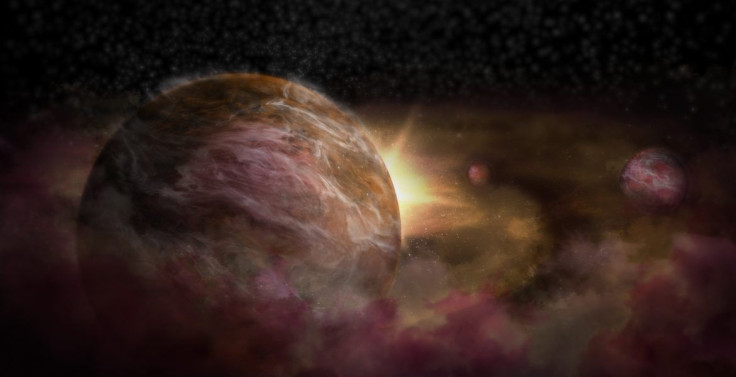Three Newborn, Dust-Cloaked Planets Found Orbiting Young Star 330 Light-Years Away

A group of astronomers looking for planets in the proximity of Earth found three newborn worlds orbiting a very young star, just 330 light-years away from us. The discovery comes through a new technique which revolves around studying protoplanetary disks – regions filled with gas and dust – surrounding young, newly formed stars.
For years, it has been believed protoplanetary disks are the brewing grounds for new planets. Scientists have got enough observational evidence to prove the hot environments in these regions form planets, but this is one of the few instances where the flow of gases, a key characteristic of such disk, has been leveraged to uncover newborn worlds hiding in these disks.
The idea, as the researchers revealed, was to monitor the flow of gases in the disk and look for disturbances or unusual patterns that could signify some sort of interaction with a planet.
"Measuring the flow of gas within a protoplanetary disk gives us much more certainty that planets are present around a young star," Christophe Pinte, the lead author on one of the two papers detailing the discovery, said in a statement. "This technique offers a promising new direction to understand how planetary systems form."
With that idea, the group, which included two independent teams, analyzed the protoplanetary disk of a young star sitting in the constellation of Sagittarius named HD 163296. They used the Atacama Large Millimeter/submillimeter Array or ALMA telescope to observe the newly-formed stellar body, which is twice as big as our sun, but a thousand times younger.
Though the dust prevailing in the star’s disk was clearly captured in the previous ALMA observations, the group focused on the presence of carbon monoxide spread throughout the disk. The molecules of the gas give away light at a distinct wavelength, which means a slight change in the wavelength of the light signified the localized movement of gas within the disk.
Once the motion of the gas was measured, the disturbances noted in it – like eddies around a rock in a river – allowed the first team to discover the three newborn planets sitting 12 billion, 21 billion, and 39 kilometers away from their young host star. All three bodies carried the same mass as that of Jupiter.
"It would take a relatively massive object, like a planet, to create localized disturbances in this otherwise orderly motion," Pinte, whose team was behind the discovery of the farthest planet [from the star], added in the statement. "Our new technique applies this principle to help us understand how planetary systems form."
The group plans to continue refining this technique and use it to observe other protoplanetary disks in order to better understand the process of planetary formation including things like how atmospheres are formed and what kind of elements and molecules go into a planet at birth.
© Copyright IBTimes 2024. All rights reserved.





















